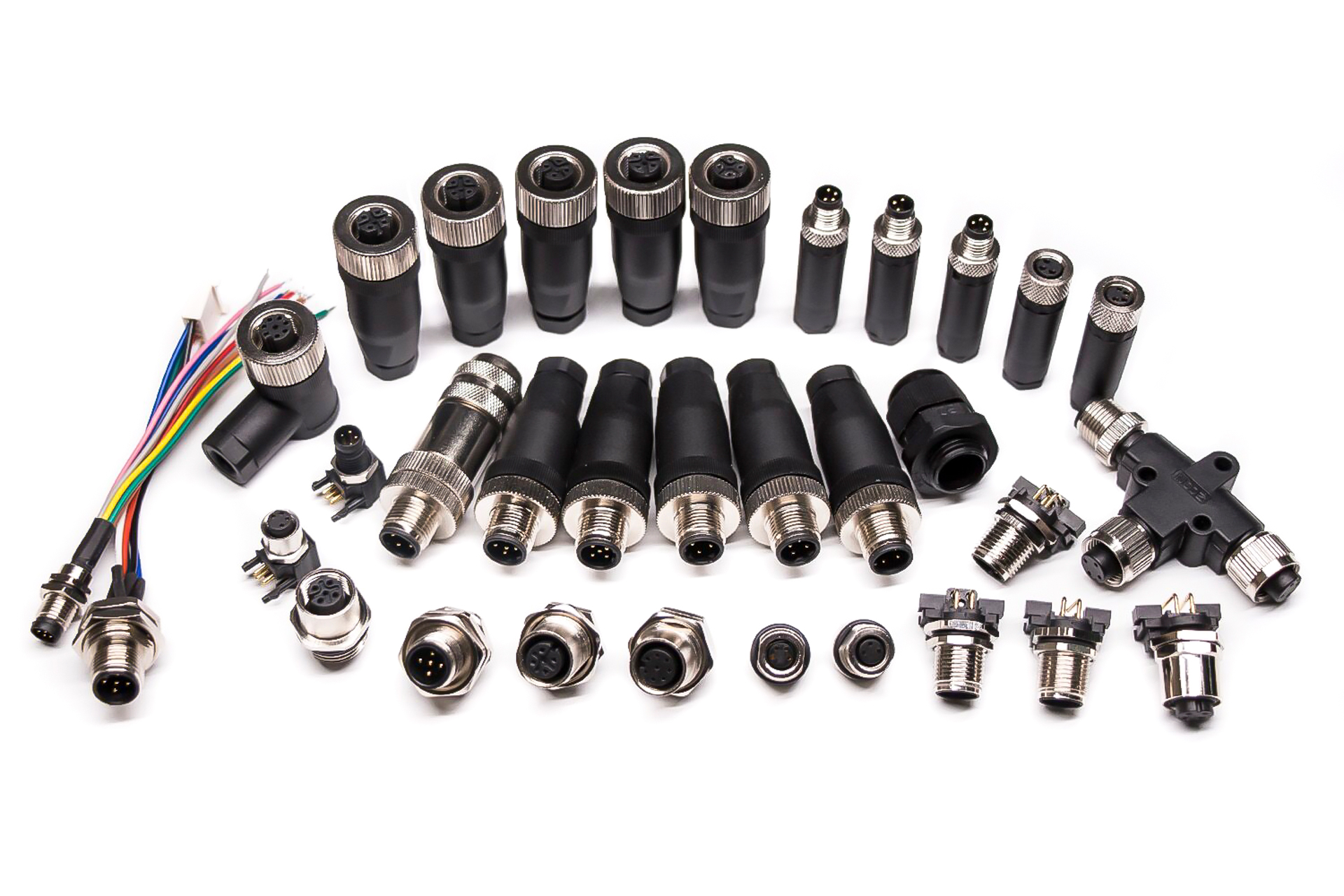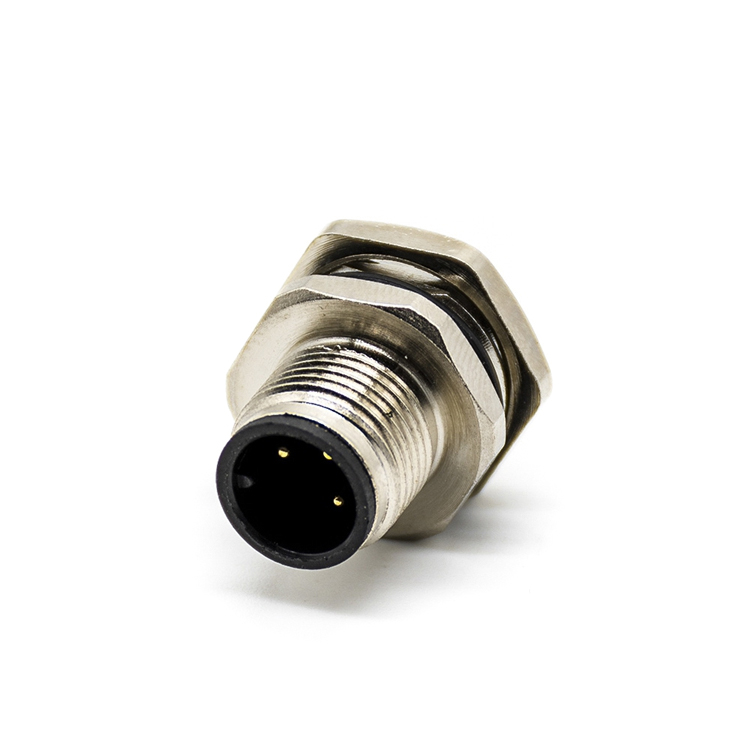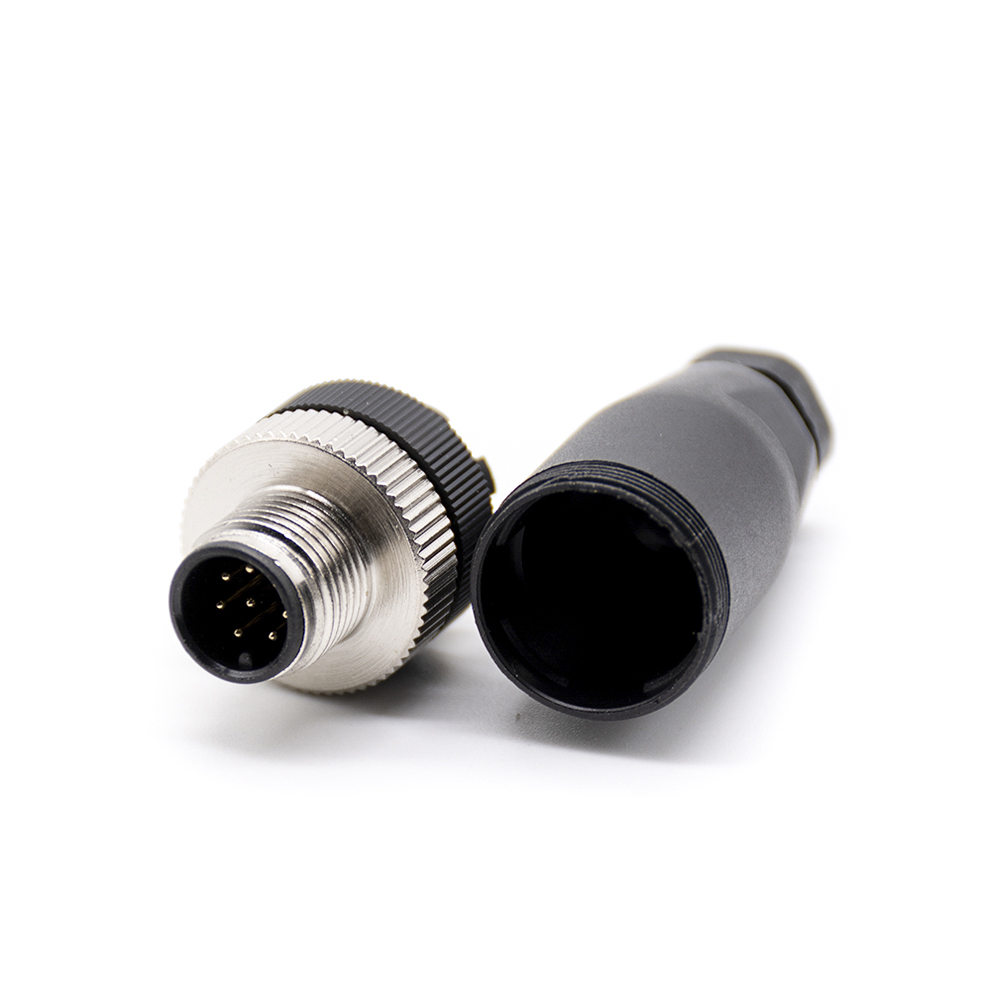M Series Connectors
Are lightweight triplestart ratchet coupling type connectors designed for avionics, aerospace, Harsh Environment Connectors, security, motorsport and heavy duty applications.
A connector is an electronic device in constant contact. It is blocked within the circuit or isolated between the inaccessible circuit, bridging the communication so that the current flow so that the circuit achieves the intended function. M12 connector has a variety of connections. There are low-cost and high-reliability. To meet the quality requirements of the premise of seeking low cost is undoubtedly the best choice.
In general terms, M12 connectors connect more than just electrical currents. In today’s rapidly developing optoelectronics, the carrier of signals in fiber optic systems is light. Glass and plastic have replaced wires in ordinary circuits. Still, connectors are also used in optical signal paths and serve the same purpose as circuit connectors.
Circular connectors are of them, also known as industrial connectors. This is because, in industrial production, the transmission of wires and electrical signals is often very complex. There may be many outputs after the input, which requires many output ports. Cylindrical will solve the problem of the coexistence of countless ports to form a three-dimensional connector.

Secondly, the cylindrical connector also has a high degree of sealing. Industrial dust has a high isolation effect, preventing dust entry and leading to electric shock and other accidents. Cylindrical connectors in high-temperature environments also pay great attention to heat dissipation. They usually come with a heat sink to ensure that some electrical signals are not lost during transmission.
There are various connection methods for M12 connectors, mainly soldering, screw connection, axial screw connection, spring connection, wire-free connection, and crimping.
Soldering is a welding method in which the joint’s metal is put under the action of high temperature, etc. until it melts. A solid welded joint can result. Since the workpieces to weld are close together, under the action of temperature field, gravity, etc., without pressure, mixing the molten liquid of the two workpieces will occur. The molten part condenses when the temperature is low, and the two workpieces are firmly welded together, completing the welding method.

Screw connections are the most versatile and widely accepted wire connection technology available. One of the key features is the maintenance-free wire connection. There is no need to tighten the terminal screws. The various copper cables can be connected without pre-treatment, creating an airtight and reliable connection. The pressure plate is between the screw and the conductor, preventing damage to the conductor.
In addition, in the presence of vibration and temperature fluctuations, the pressure plate locks the screw to prevent loosening. It also prevents the wire from splitting through a cold crimp. With the screw connection technology, several wires can have a single screw crimp. The screw-connected busbars are made of high-grade copper alloy, which is crack-proof and corrosion-resistant.

Axial screw connections consist of inserting the end of the wire to connect into the wiring area of a pin or hole-type pin. The tapered needle (part of the needle) is then screwed into the front of the soft wire. We press the stranded wire onto the needle plate. This creates a long-term, stable, airtight connection between the core wire and the pin. It must use the specified tightening torque.
The tapered pin push in with a hexagonal wrench from the front of the pin. This connection technique combines the advantages of screw connections and crimping. It takes up very little space and is easy to operate, as only a standard hexagonal wrench is required.
The spring connection uses a steel spring tab to crimp the stripped cable to the bus bar. A standard screwdriver opens the contact, inserts the wire into the terminal lug, and removes the screwdriver for the crimp. The crimping force is independent of the operator and is vibration resistant, airtight, and stable over time. A cold crimping head can also forbid wire splitting.
Crimping technology is known for its small footprint and cost-efficiency. For reliable crimping, it is important to ensure that the wiring capacity is correct and that the crimping pins and tools fit together. Since crimping tools are subject to wear and tear, it is important to monitor the crimping process for batch work. The crimping requirements are set out in DIN EN 60352-2.
The quality of the crimp by looking at the joint’s tensile strength and the crimp area’s deformation (whether there are cracks). After crimping, the crimp pins must not show an impermissible extension. Otherwise, the crimp pins will not snap onto the insert correctly. Use the unlocking tool to loosen the connection. Installation tools for various fine wires are available.
Using this connection technique, we place the unstripped wire in the opening in front of the cutter and press the wire into the opening. In this way, we cut the insulation of the wire and a sealed connection is formed between the core and the contact. This saves 60% of the wiring time. There is no need to consider the connection force used, only the specified wire diameter and connection conditions, and a reliable connection can result.
Urban rail vehicles’ M12 connector connection methods are mainly screwing connection, piercing and crimping three, so we are comparing these three connection methods.
Screw connection is currently a more widespread wire connection. Its lower cost and wiring conduction rate is higher, and the requirements for personnel are relatively low. Does not require any special tools, but when the cable core is small need to fold the core or add a cold press terminal connection can not do the tension test.
The piercing connection method saves most of the time because it eliminates the need to pre-process the cable and is easy to operate. Still, the piercing connection requires high-quality connectors and harsh conditions for the hardness of the cable insulation. As a result, it often causes the finished connector to fail to conduct, resulting in much rework and time spent.
Crimp joints provide highly reliable, airtight connections. The quality of the crimp can be seen by observing the tensile strength of the connection. To ensure a reliable connection, it is necessary to make sure that the wiring capacity is correct. And make sure the matching of the crimping tool to the insert. Because crimping tools are subject to wear when crimping in bulk, supervise the crimping process. Unqualified inserts can only direct scrap, and the higher price of inserts adds to the cost.
Although the production time of the perforation type is short, the rework time is long and connection quality is unsure, so it is not recommended. A screw connection is more cost-effective, and the connection quality has a guarantee. Can consider using in a certain range. Crimp connection, although the material cost is high, the skills of the operating staff requires high. But the connection quality with high reliability, taking into account the quality of the M12 connector connection, play a decisive role in the stability of the network system, so the use of crimping connection can spread.